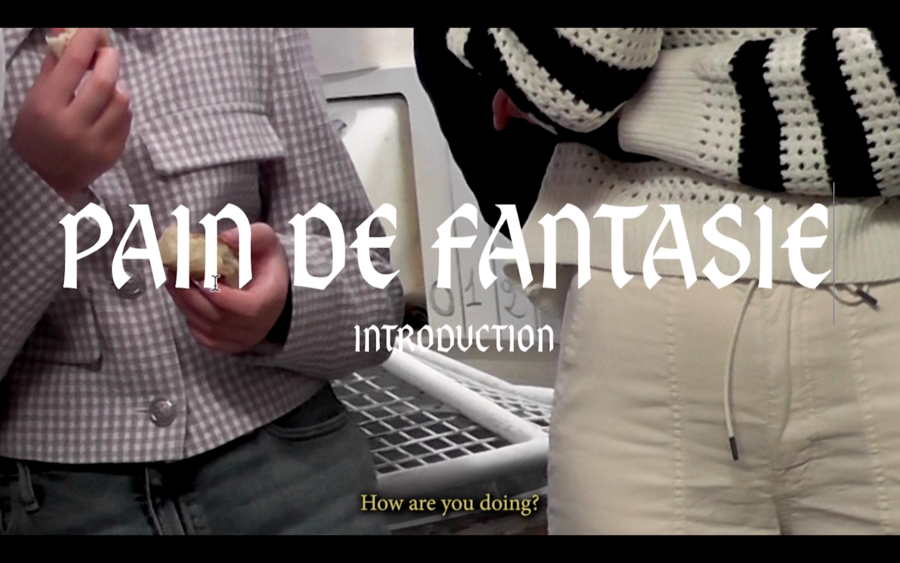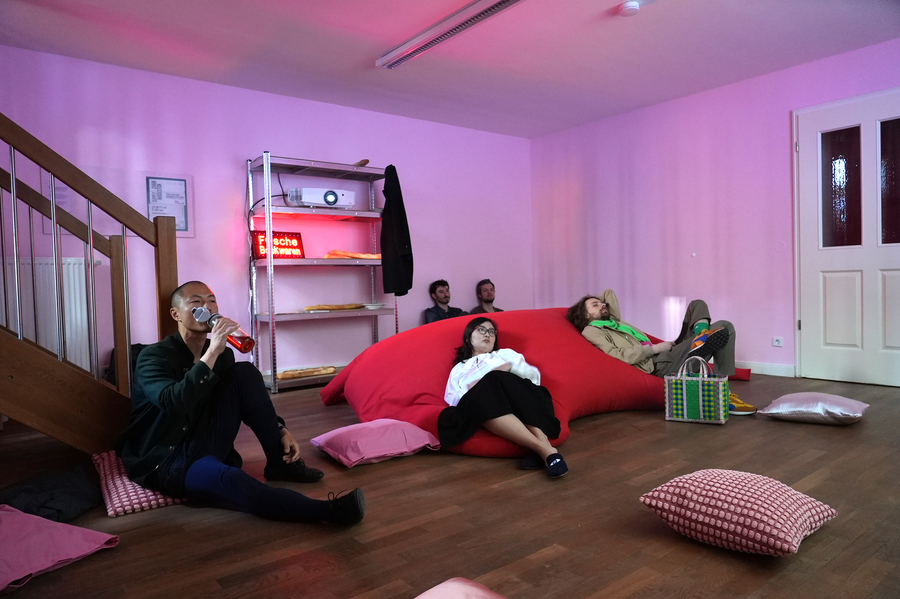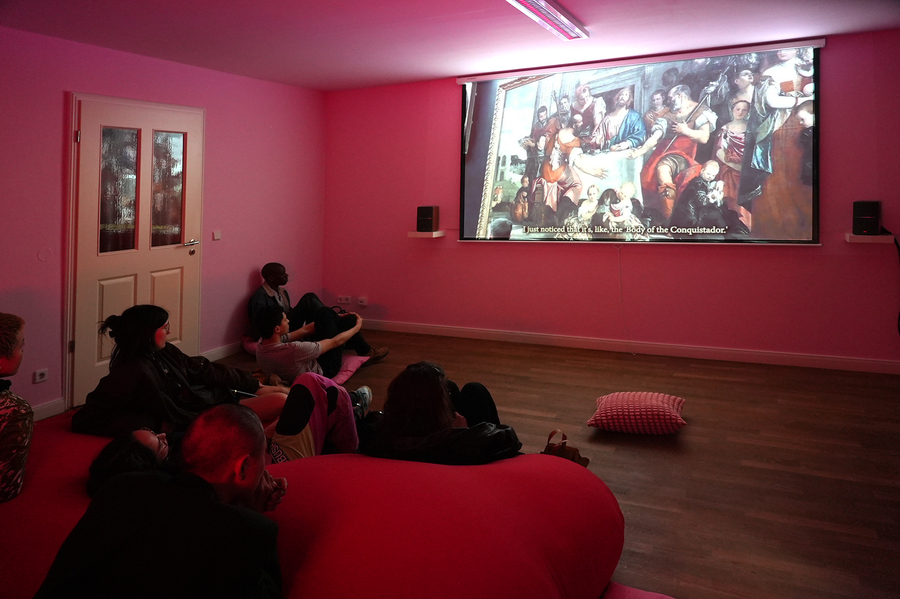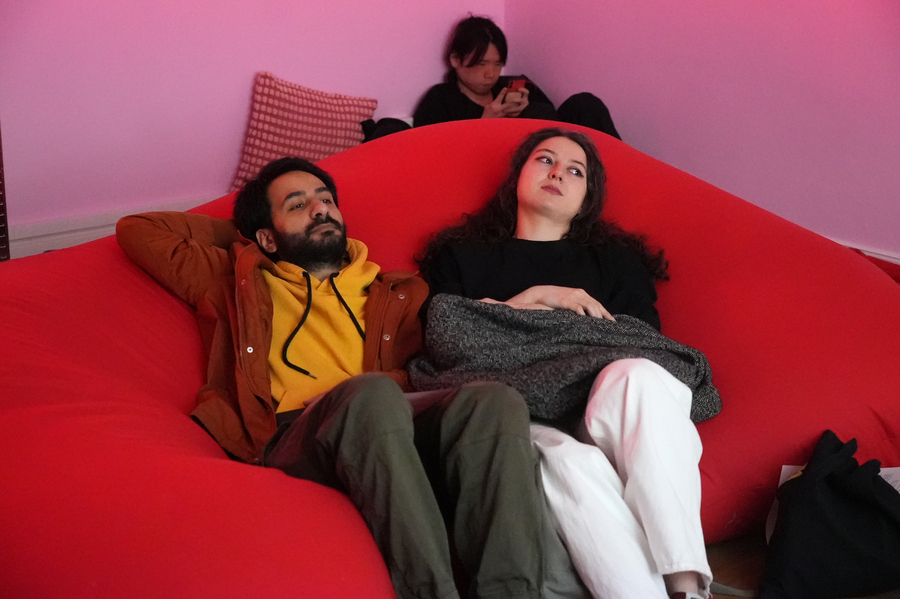PAIN DE FANTASIE

When a worker falls into a full silo, the grain can act like quicksand, sucking the person down. The Cooperative is giving people the experience of being trapped, and showing them how to get out safely. It’s called a grain engulfment simulator.
The film Pain de Fantasie*, by Hannah O’Flynn and Kari Leigh Rosenfeld, departs as an investigation into how the over-signified baguette has become entangled in histories of exploitation, and into how it plays a role in the propagandistic narratives of these histories. It thinks of the inescapably of colonial narratives, even down to a sandwich.
The film’s first chapter, Pan de la Doctrina, is an examination of the symbolism attributed to bread within the colonisation of the Americas. It looks at how the Spanish held within the object of bread the narration of a new racial order being constructed, searched in it to justify the violence of colonisation and exploitation, held it as an emblem of forced Christianisation, hid behind it its fears, and set off under its banner the destruction of entire ecosystems.
The second chapter, NuFrontier, rather looks at how bread, and particularly wheat, were used in US Cold War propaganda in its claims to superiority, as well as a “cure-it-all” in its fight against Communism. It traces the project of the Green Revolution and its promises to ever-growing yields of wheat, as well as the catastrophic social and ecological impacts it had globally.
Playing on the genre of essay film, Pain de Fantasie attempts to answer how one is to create a historical narrative in voices that disturb the (singular) voice of authority used within the mechanism of truth-making in the institution of “written history”. The role of the researcher and the director become (scheming) tropes, while a teenager becomes the expert by reading out a paper written by ChatGPT. The multiple propagandas get braided together, unclear where they start and where they end, becoming as confusing as researching the violences encoded into the numerous symbolisms of bread while eating it every day. A screen in a screen becomes the space for an always unfinished research, many questions left open.
Somehow, the film becomes a sandwich, too.
___________________________________________
*“Pain de fantasie”, according to some of the contradictory histories of French bread, was the category under which the predecessor of the baguette fell under. A sometimes up to two meter long bread, this forerunner was stored by being rested standing against a wall due to its length. The reason for its comical size was that making a bread larger than a certain expected standard allowed it to circumvent French laws limiting bread price, placing it within a separate category of luxury white breads.



